Idea by
Cesar Cornejo
Call for ideas 2017
Puno Museum of Contemporary Art
Puno Museum of Contemporary Art
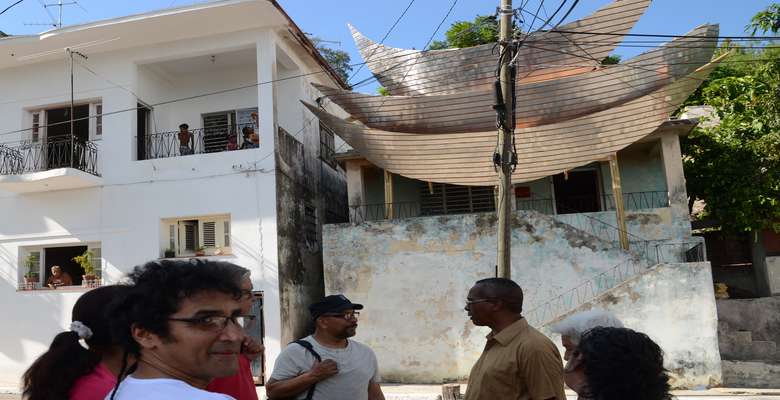
It would redefine the idea of museum and transform it into a community-based institution, both in the managing and the infrastructure aspects.
The project would also generate cultural, educational and economical activities. Also the exhibiting artists would work in collaborative projects with the homeowners.
Besides the repairs, the home-museums would also have made a temporary sculptural façade, which would interpret particular aspects of the history of the resident family, and also make reference to iconic museums architecture, such as the Guggenheim Museum in Bilbao.
When the exhibitions are over, the repaired spaces return to their normal functions, and new homes would be found.
The project will bring art to areas where it would not normally reach while transforming underprivileged neighborhoods. The visitors would interact with the neighbors and walk the streets as if they were the museum corridors.
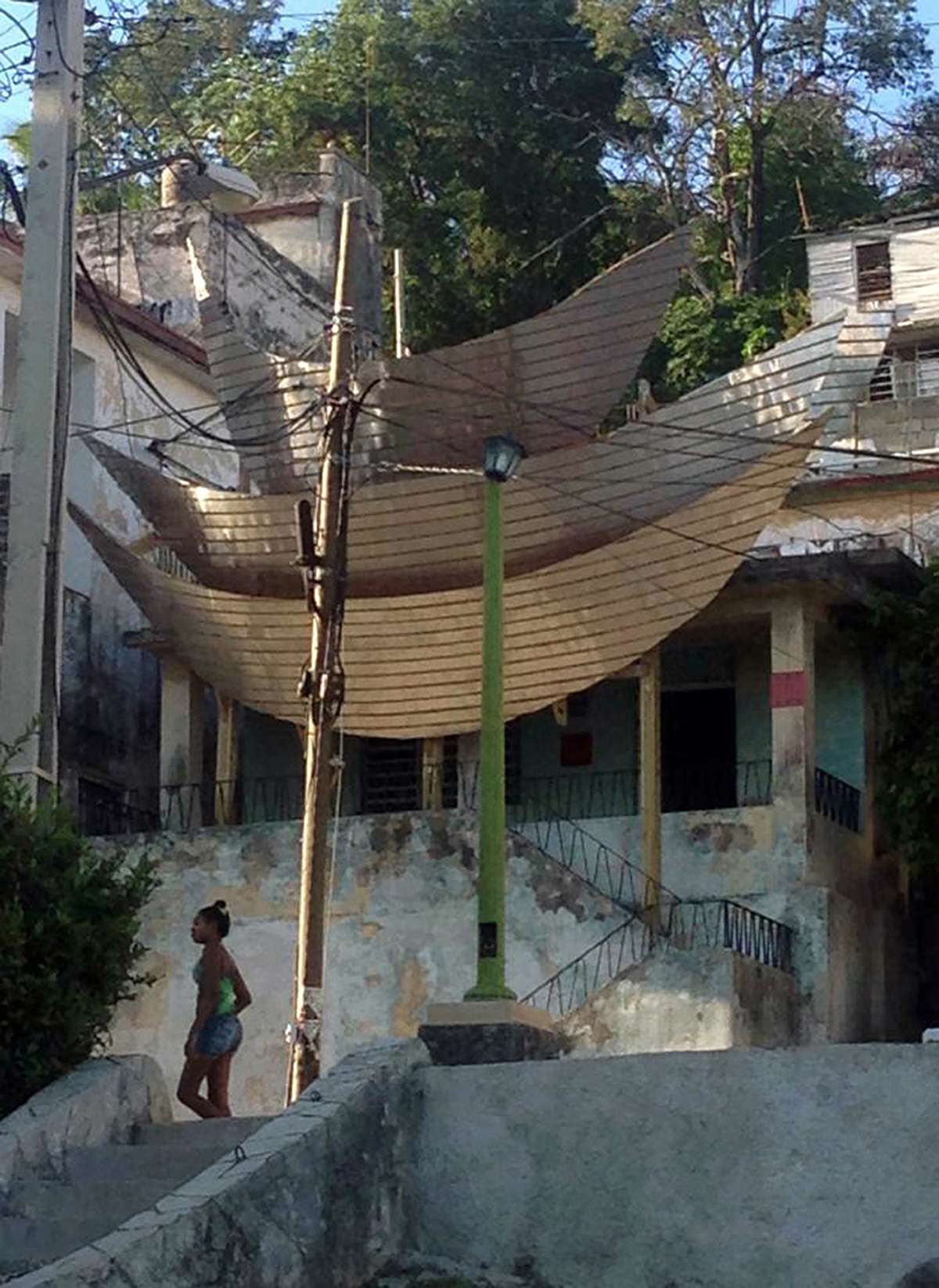
Puno MoCA presents Havana Museum of Contemporary Art, XII Havana Biennial. I had repaired spaces in a family house in Casa Blanca, Havana, also built a façade that made reference to the family’s history, who had owned 4 boats that were later expropriated by the revolution. The façade also made reference to images of iconic museum architecture, specifically the Guggenheim Bilbao Museum. During the biennial, the owners of the house received the visitors guiding them through the exhibitions spaces.
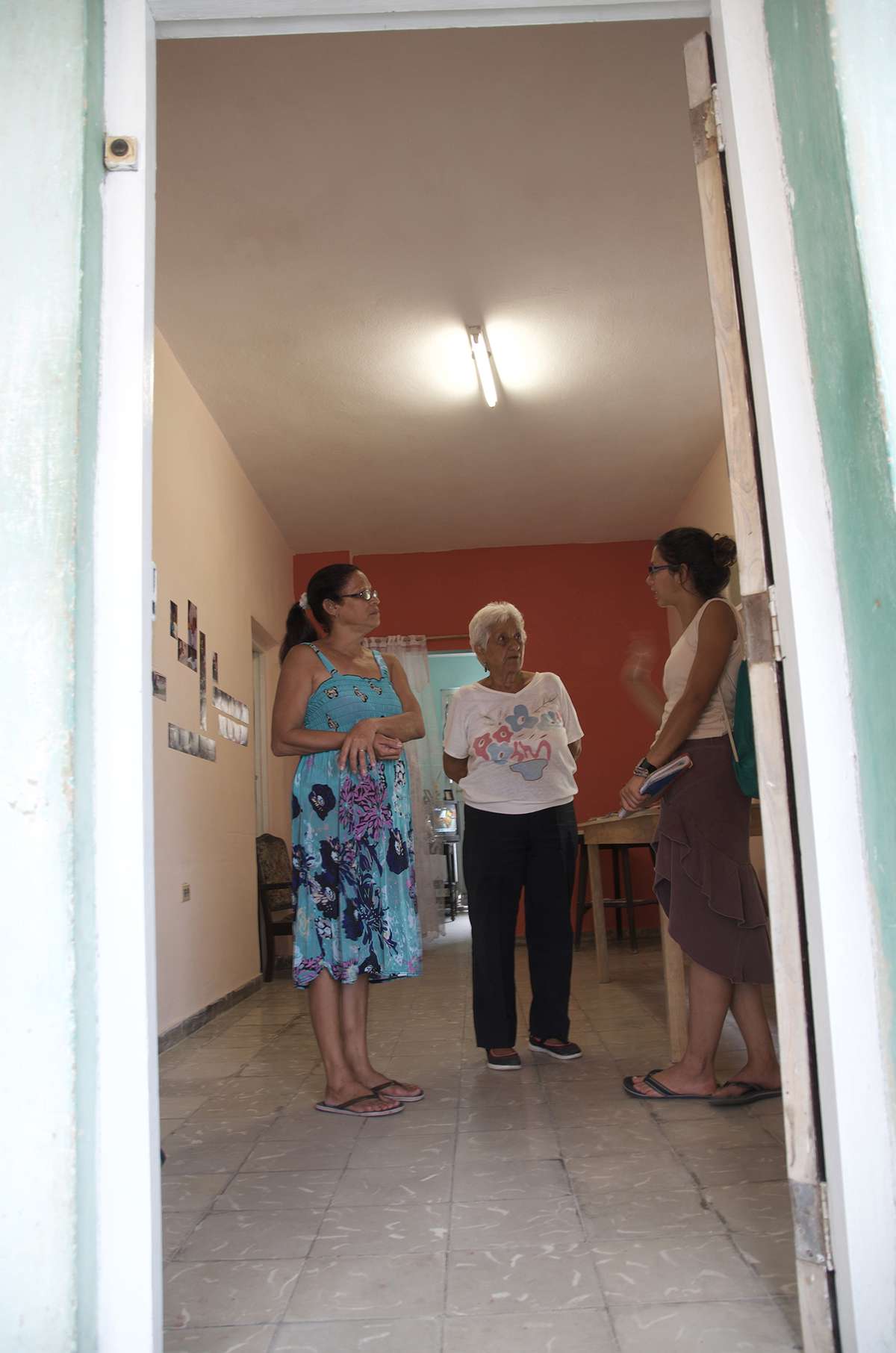
Members of a family in Casa Blanca, receiving a guest in their house during the XII Havana Biennial, where Puno MoCA had repaired two spaces inside the house and the entrance. The repairs where carried out by a family member who is a builder, and financed by Puno MoCA. The exhibition remained open during the duration of the biennial. The exhibition presented inside was “Echando Lapiz”, by Colombian artists Manuel Santana and Graciela Duarte.
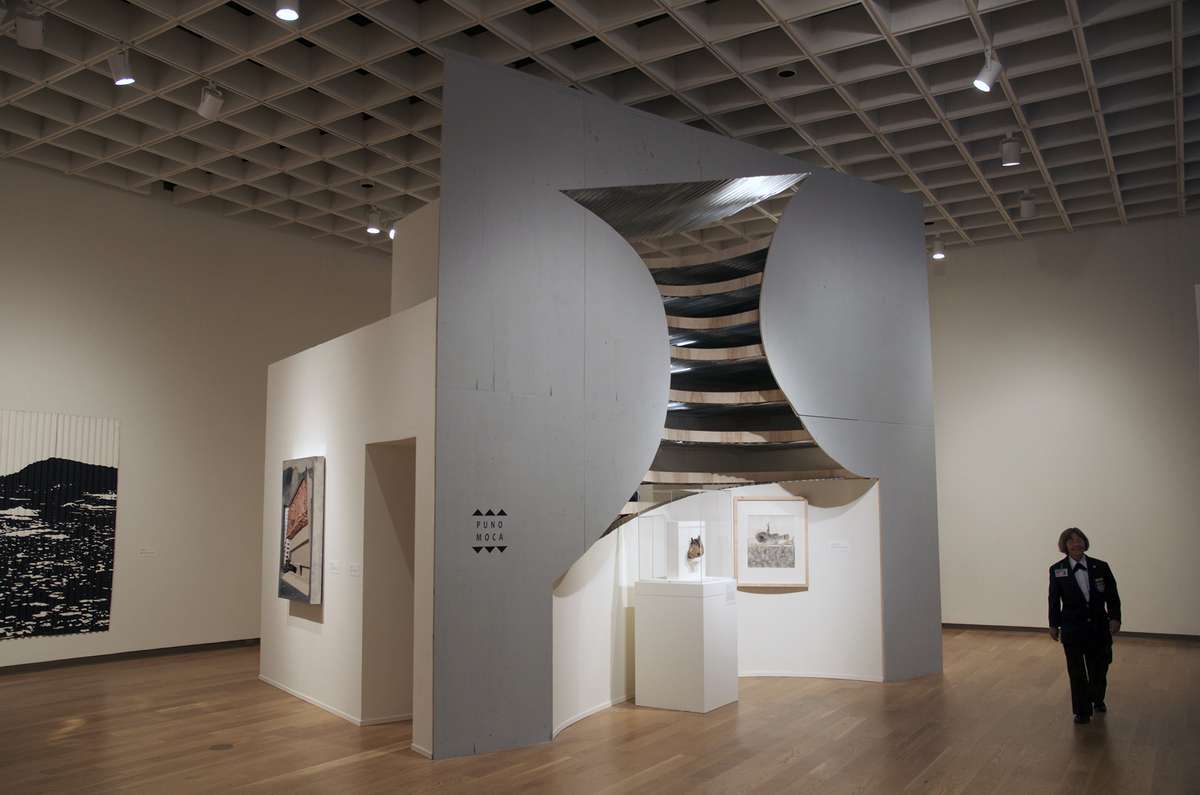
Puno MoCA Pavilion at the exhibition Florida Prize, Orlando Museum of Art in 2015. This installation represented the section of a museum, showing the exhibition space where a Peruvian Pre-Hispanic ceramics piece from the museums collection, was shown next to the work of a contemporary artist from Puno. Both works represented fish, creating a connection through centuries. The space over was made with corrugated metal sheets, same as the ones used in shantytowns in Latin America.
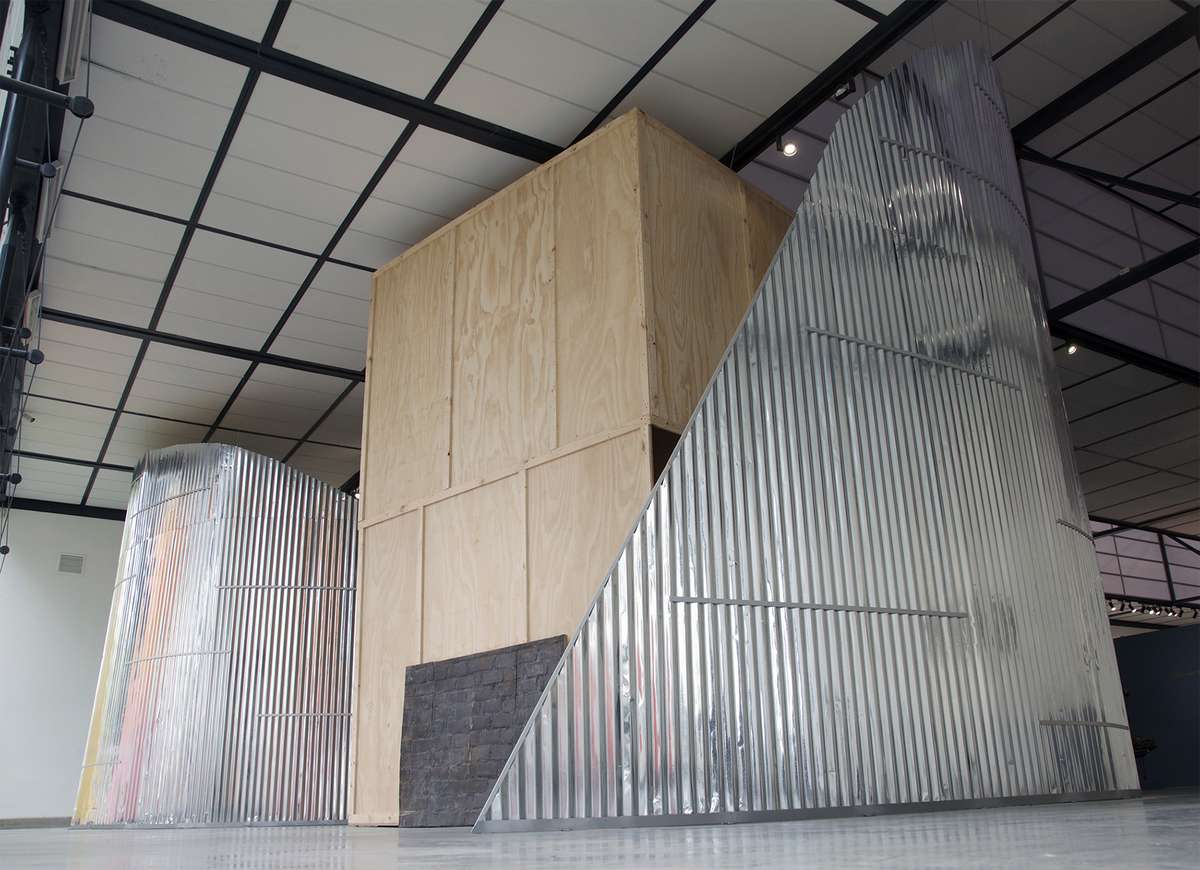
Puno MoCA installation at the exhibition Vacio Museal, at Lima's Museum of Contemporary Art, Exhibition Vacio Museal, curated by Gustavo Buntinx. The work resembled the shape of a snake in the shape of a sinuous wall, made of corrugated metal sheets, that revolved around two spaces that recreated architecture from Puno and Lima, where Puno MoCA had carried out interventions. People were able to walk into the spaces, and climb stairs to see photos and sculptures related to the projects.
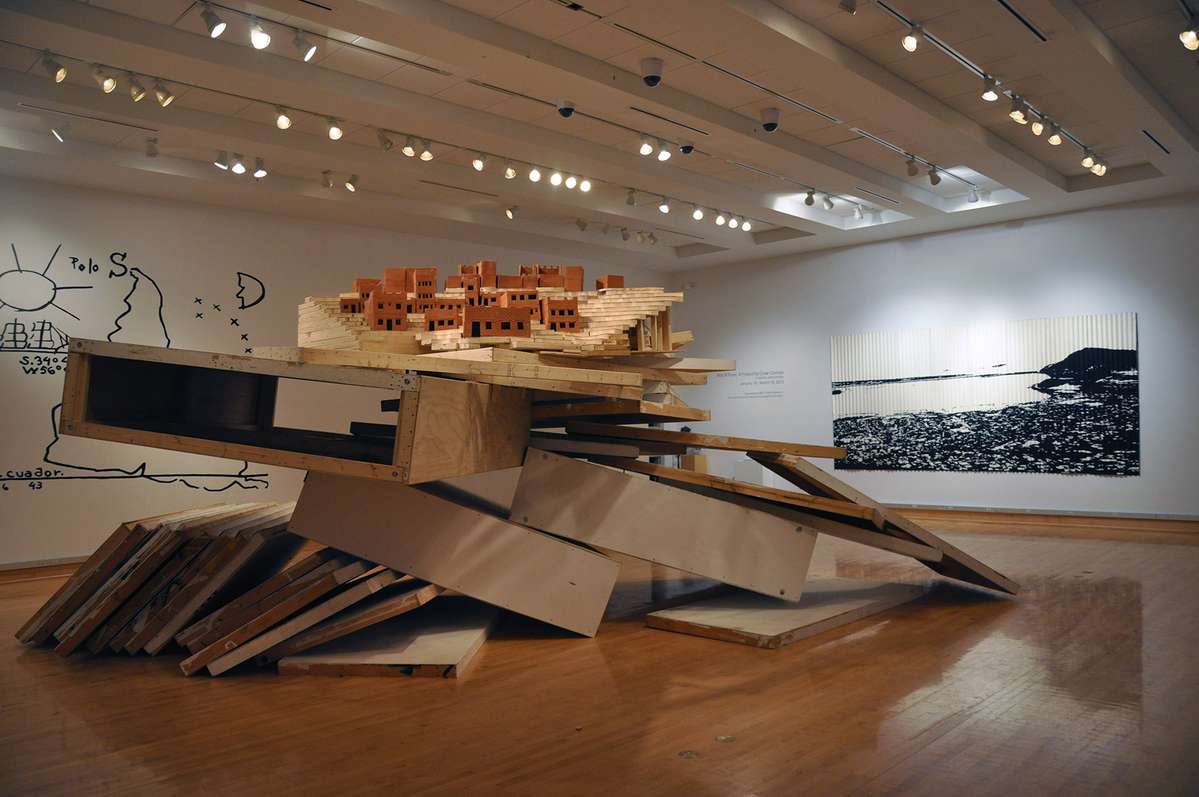
Installation Puno MoCA at Florida Gulf Coast University Gallery, Fort Myers, Florida. This work used the gallery partition walls to create a mountain in the center of the gallery, that resembled the mountains in Puno Peru. at the top of it was the recreation of a town, made of ceramics. There was a landscape of Puno painted on a paper support casted on the shape of corrugated metal sheets. The landscape portrayed the view that someone has from the top of the mountain El Condor, in Puno, Peru.
Puno Museum of Contemporary Art
Puno Museum of Contemporary Art

It would redefine the idea of museum and transform it into a community-based institution, both in the managing and the infrastructure aspects.
The project would also generate cultural, educational and economical activities. Also the exhibiting artists would work in collaborative projects with the homeowners.
Besides the repairs, the home-museums would also have made a temporary sculptural façade, which would interpret particular aspects of the history of the resident family, and also make reference to iconic museums architecture, such as the Guggenheim Museum in Bilbao.
When the exhibitions are over, the repaired spaces return to their normal functions, and new homes would be found.
The project will bring art to areas where it would not normally reach while transforming underprivileged neighborhoods. The visitors would interact with the neighbors and walk the streets as if they were the museum corridors.

Puno MoCA presents Havana Museum of Contemporary Art, XII Havana Biennial. I had repaired spaces in a family house in Casa Blanca, Havana, also built a façade that made reference to the family’s history, who had owned 4 boats that were later expropriated by the revolution. The façade also made reference to images of iconic museum architecture, specifically the Guggenheim Bilbao Museum. During the biennial, the owners of the house received the visitors guiding them through the exhibitions spaces.
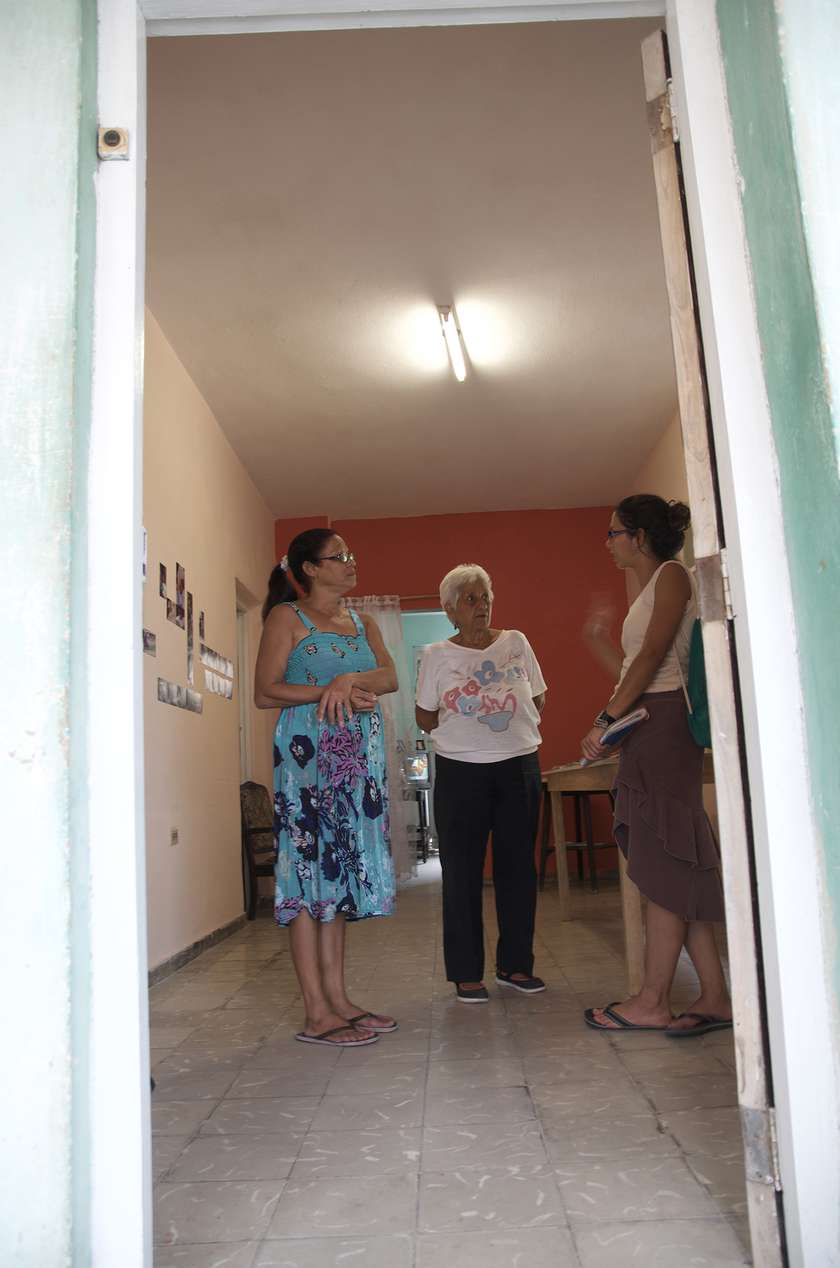
Members of a family in Casa Blanca, receiving a guest in their house during the XII Havana Biennial, where Puno MoCA had repaired two spaces inside the house and the entrance. The repairs where carried out by a family member who is a builder, and financed by Puno MoCA. The exhibition remained open during the duration of the biennial. The exhibition presented inside was “Echando Lapiz”, by Colombian artists Manuel Santana and Graciela Duarte.
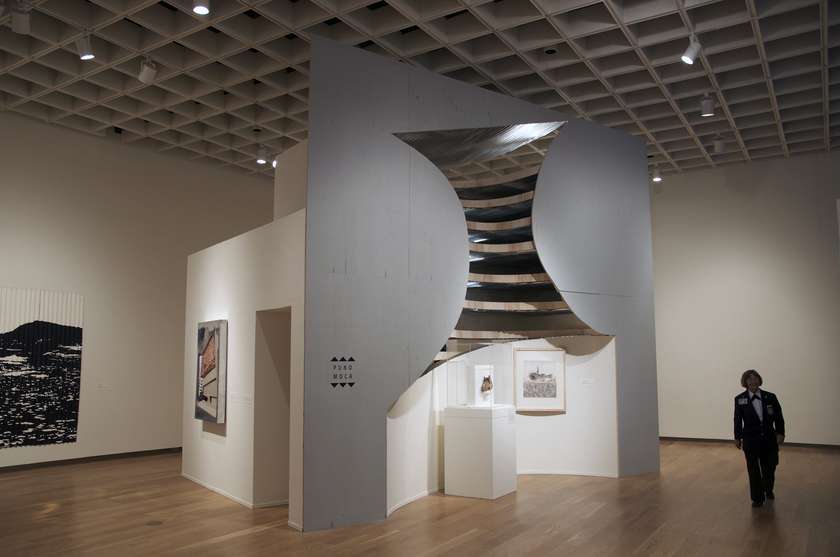
Puno MoCA Pavilion at the exhibition Florida Prize, Orlando Museum of Art in 2015. This installation represented the section of a museum, showing the exhibition space where a Peruvian Pre-Hispanic ceramics piece from the museums collection, was shown next to the work of a contemporary artist from Puno. Both works represented fish, creating a connection through centuries. The space over was made with corrugated metal sheets, same as the ones used in shantytowns in Latin America.
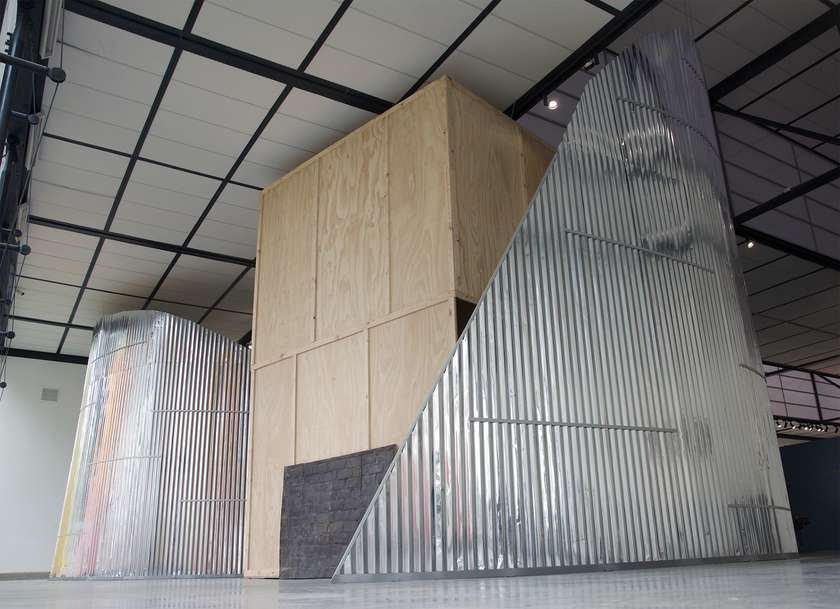
Puno MoCA installation at the exhibition Vacio Museal, at Lima's Museum of Contemporary Art, Exhibition Vacio Museal, curated by Gustavo Buntinx. The work resembled the shape of a snake in the shape of a sinuous wall, made of corrugated metal sheets, that revolved around two spaces that recreated architecture from Puno and Lima, where Puno MoCA had carried out interventions. People were able to walk into the spaces, and climb stairs to see photos and sculptures related to the projects.
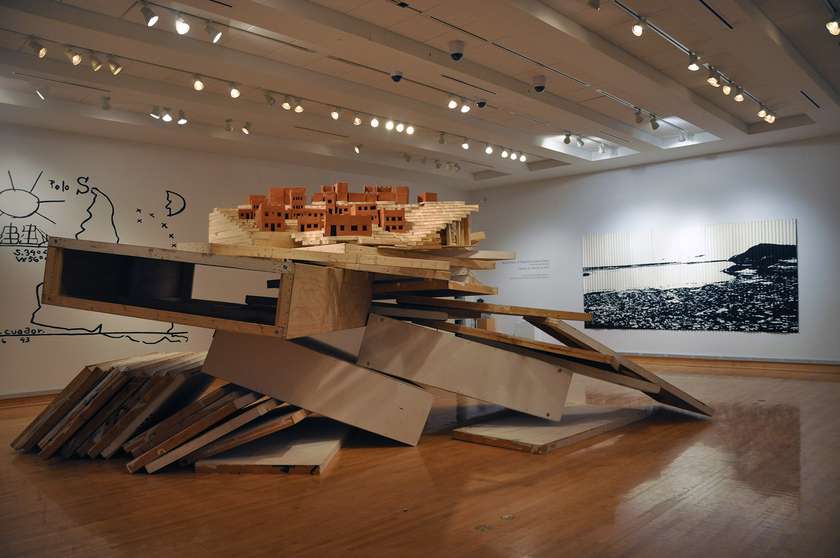
Installation Puno MoCA at Florida Gulf Coast University Gallery, Fort Myers, Florida. This work used the gallery partition walls to create a mountain in the center of the gallery, that resembled the mountains in Puno Peru. at the top of it was the recreation of a town, made of ceramics. There was a landscape of Puno painted on a paper support casted on the shape of corrugated metal sheets. The landscape portrayed the view that someone has from the top of the mountain El Condor, in Puno, Peru.